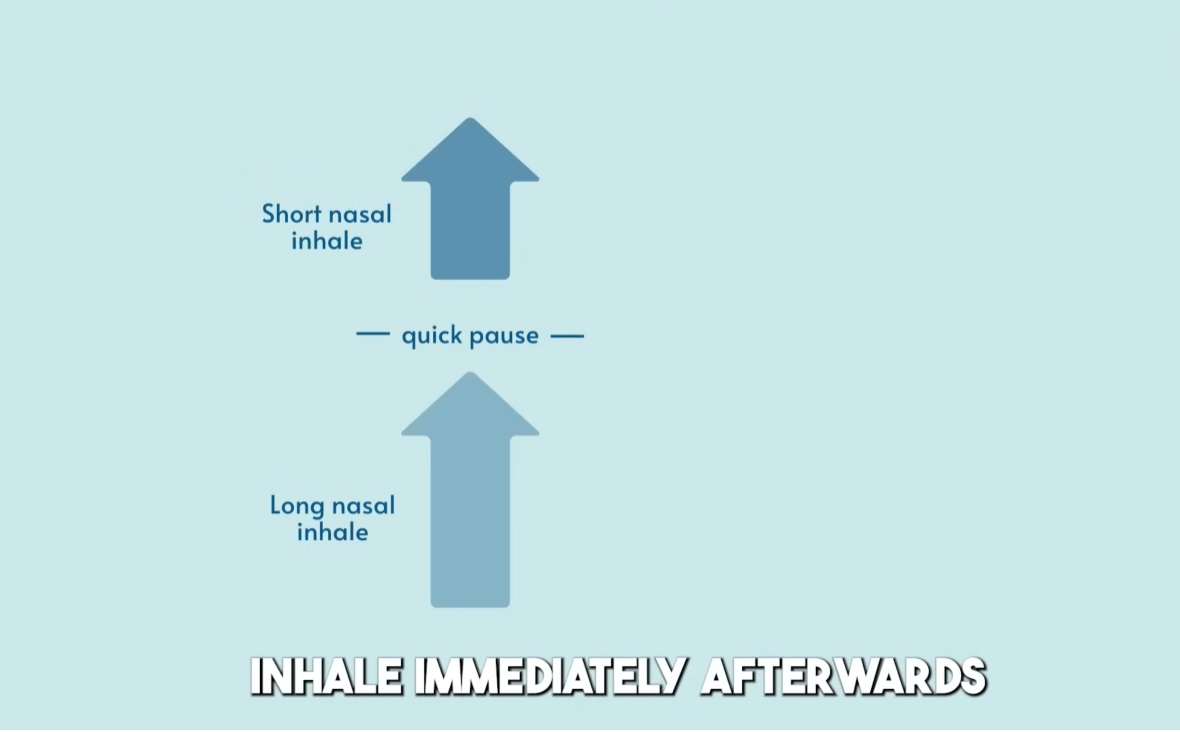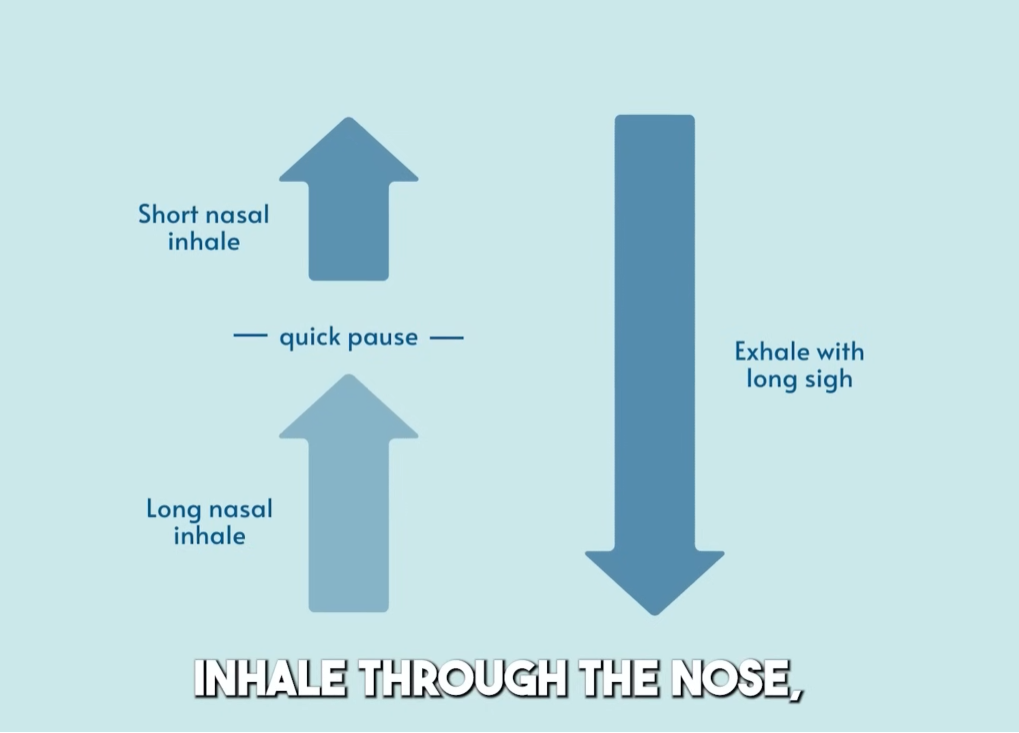In today’s high-paced world, stress has become a silent epidemic, affecting everything from our mental clarity to our immune function. As a nutritionist and chef with over two decades of experience in holistic health, I’ve worked with countless clients looking for simple yet effective ways to lower stress and support emotional balance. One scientifically validated practice stands out for its simplicity, efficiency, and impact: cyclic sighing.
If you only have five minutes a day to dedicate to your mental and physical well-being, this powerful breathwork technique could be one of the best investments you make in your health.

What Is Cyclic Sighing?
Cyclic sighing is a controlled breathing technique that mimics a naturally occurring pattern our bodies use to restore balance. It involves two quick, consecutive inhales through the nose followed by a long, controlled exhale through the mouth.
This isn’t a wellness trend or biohacking gimmick—it’s a physiologically grounded practice. Research from neuroscience and pulmonary physiology shows that this simple breathing pattern has immediate, measurable effects on reducing stress hormones, calming the nervous system, and restoring optimal oxygen-carbon dioxide levels in the blood.
How To Perform Cyclic Sighing
You don’t need any equipment, apps, or special settings to practice this. Whether you’re sitting in your car before a meeting or winding down before sleep, you can do this anywhere.
Here’s how:
- First Inhale (Through the Nose): Breathe in deeply to fill your lungs as much as possible.
- Second Inhale (Quick and Shallow): Take a quick, short inhale on top of the first to fully expand the lung’s alveoli (tiny air sacs that often partially collapse due to stress or shallow breathing).
- Long Exhale (Through the Mouth): Exhale slowly and fully until your lungs feel empty.
Repeat this pattern continuously for about 5 minutes.

Why It Works: The Science of the Breath-Body Connection
Cyclic sighing taps into how your respiratory system interacts with the brain’s stress response. Here’s what happens:
- Lung Re-Inflation: The double inhale fully opens up the alveoli, increasing oxygen exchange and lung efficiency.
- Carbon Dioxide Regulation: The long exhale releases excess CO₂, which builds up during shallow or held breaths—a common response to anxiety and digital device use.
- Nervous System Reset: This breath pattern activates the parasympathetic nervous system (our “rest and digest” mode), decreasing heart rate and promoting calm.
In clinical trials, this method has been shown to outperform other common stress-reduction techniques, including mindfulness meditation, box breathing, and simple paced respiration—especially in its ability to lower physiological markers of stress rapidly.
Real-World Benefits You Can Feel
Integrating cyclic sighing into your daily wellness routine can lead to:
- Reduced Anxiety Levels: This breath practice lowers cortisol and adrenaline, reducing feelings of overwhelm and tension.
- Better Sleep Quality: Practicing this before bed has been shown to promote faster sleep onset and deeper sleep cycles.
- Enhanced Focus and Mood Stability: By rebalancing oxygen and CO₂, cyclic sighing sharpens mental clarity and emotional regulation.
- In-the-Moment Stress Relief: Even a single sigh can shift your nervous system from “fight or flight” to calm in real-time—perfect for meetings, public speaking, or high-pressure moments.

Breath and Lifestyle: A Missing Link in Modern Wellness
What makes cyclic sighing so relevant today is how modern habits contribute to breath dysfunction. Studies have shown that people frequently hold their breath or breathe shallowly while texting or scrolling through social media. This “email apnea” triggers a subtle but chronic stress response—raising CO₂ levels, increasing blood pressure, and reinforcing mental fatigue.
Moreover, many of us spend the majority of our day indoors, hunched over screens, with limited physical movement. This posture compresses the diaphragm, further reducing breath depth and promoting poor oxygenation. Over time, these habits erode our natural ability to self-regulate through breath.
That’s why cyclic sighing is more than just a stress-reduction tool—it’s a way to reclaim your body’s innate rhythm and resilience.
Expert Tip: Pair Breathwork with Daily Wellness Anchors
To amplify the effects of cyclic sighing, integrate it with other proven strategies that support your nervous system and mood:
- Nutrition: Eat foods rich in magnesium, B vitamins, and omega-3s (think leafy greens, wild-caught salmon, pumpkin seeds) to support neurological function and stress response.
- Hydration: Dehydration can intensify the effects of stress on the body. Aim for at least half your body weight in ounces of water daily.
- Sunlight Exposure: Morning light helps regulate circadian rhythms and lowers stress hormones naturally.
- Movement: Gentle movement such as walking, yoga, or tai chi synergizes beautifully with breathwork.
When and How Often Should You Practice?
For maximum benefit, perform cyclic sighing for 5 minutes once a day. But don’t hesitate to use it as needed throughout your day—whether you’re feeling overwhelmed, preparing for a stressful event, or transitioning between tasks.
Think of it like brushing your teeth—but for your nervous system.
A Practice Rooted in Evolution
Interestingly, this isn’t a “new” discovery. Physiologists in the 1930s observed this exact breathing pattern in people and animals. Dogs, for example, often perform a double inhale followed by a sigh just before settling down for a nap. Humans engage in spontaneous sighs during sleep and after prolonged breath-holds—often without realizing it.
In essence, cyclic sighing reconnects us with an ancient, biologically ingrained mechanism for self-regulation that we’ve lost touch with in our over-stimulated modern lives.

Final Thoughts: Breathe Intentionally, Live Calmly
If you’re looking for a fast, science-backed way to relieve stress, improve mood, and even enhance your sleep—cyclic sighing is a powerful tool. It’s free, easy, and requires no special setup or equipment. Just five minutes a day can restore balance to your mind, body, and nervous system.
As a health expert, I’ve seen the transformative impact of small daily habits like this—especially when combined with nourishing foods, proper hydration, and mindful lifestyle choices.



